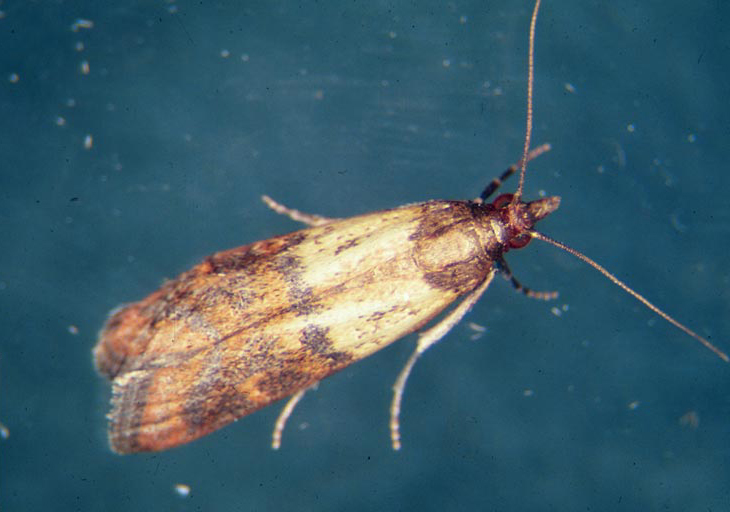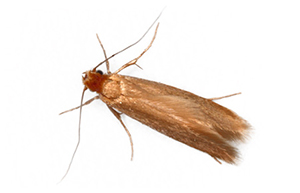
(Attribution: Whitney Cranshaw, Colorado State University, Bugwood.org)


Moths that cause problems for homeowners and businessowners in southern New England fall into two categories: grain moths or clothes moths. When it comes to winged grain pests, the most commonly found species are the Indianmeal moth and the Mediterranean flour moth. Braman’s moth control methods can help you remove these nuisances quickly. When it comes to grain pests, moth removal is imperative because they have the ability to contaminate large amounts of stored grain-based products.

Grain moths are attracted to light and can be found around the globe in areas where food is stored, be it your cabinets or the local grocery store. These pests will feed on cereal, bread, nuts, spices, pasta, rice, flour and much more. Their larvae, more commonly called caterpillars, can actually chew through plastic to reach their goal, so, boxed and bagged foods are susceptible to infestation.

While grain moths don’t pose any direct health threats to people, they can contaminate food products, making their presence very distasteful. In a commercial environment the problem is even more serious because their presence may result in failed food safety inspections or the loss of customer retention. They will also hurt a business’ bottom line due to treatment, product disposal and replacement.

Your most likely indicator that you have a moth problem is simply seeing these creatures in your building, so identification is key. The adult Indianmeal moth measures between ⅝ of an inch to ¾ of an inch long and their wings are half tan and half copper-colored.
The Mediterranean flour moth is slightly larger, featuring pale-gray wings with a dark zigzag marking.
For both types of pantry moths, look through your grain-based foods for silky webbing and fecal pellets. Both of these signs are produced by pinkish or yellowish colored larvae belonging to these pest moths.

Treatment for grain moths is very similar to that of other grain insects. In a residential setting, we suggest focusing on prevention by practicing good sanitation. If you do get an infestation, you need to find the source, throw away all infested food and protect susceptible foods from infestation. Vacuum the empty shelves to remove any insects and food particles and store new food products in tightly sealed glass or plastic containers.
Even after this course of action, you may still need professional help through a moth removal service. In some cases, grain moths can perpetuate themselves on food that has been stashed away by mice. These problems are difficult to solve on your own. Braman can send a moth pest control expert to implement targeted applications of insecticide, insect growth regulator and pheromone traps.
In a commercial setting, a pheromone trapping program will enhance sanitation efforts similar to those used in residences. If a problem is discovered, a careful product inspection can help identify the specific offending product, which can then be removed, before problems get out of hand
If you suspect that you have a moth problem in either setting, contact us right away.

Tell us about your pest problem. We can provide a free estimate over the phone.
Call Braman 24/7 at 800-338-6757

(Attribution: Whitney Cranshaw, Colorado State University, Bugwood.org)